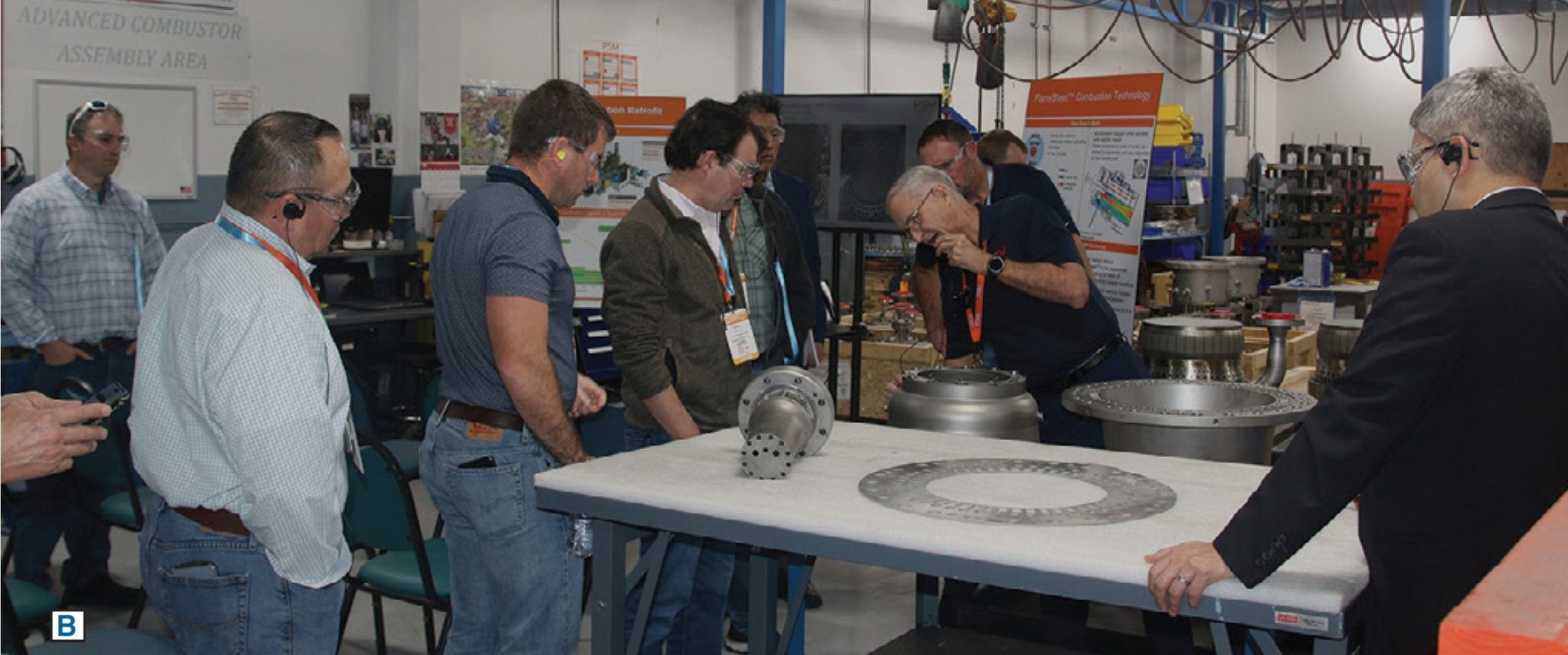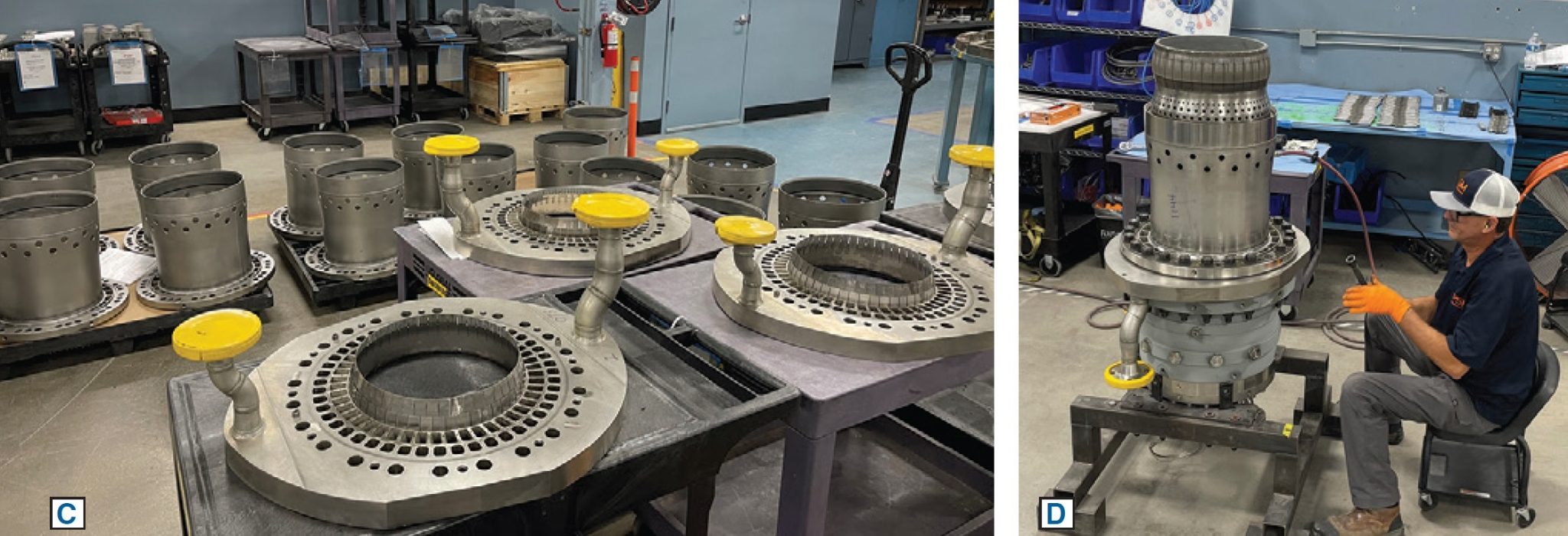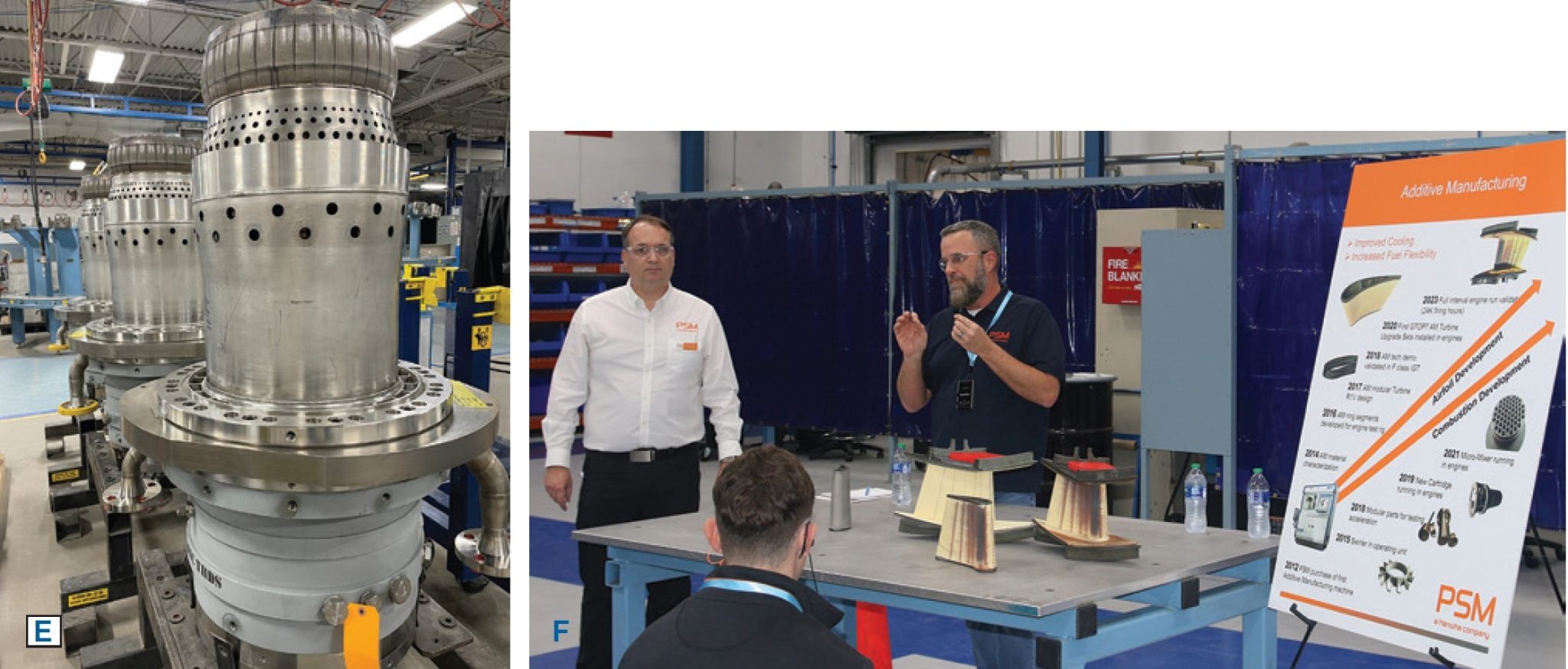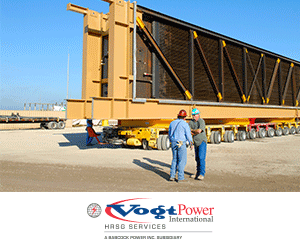This is the second segment of CCJ’s three-part report on PSM’s 2024 Asset Management Conference, conducted at the Westin Beach Resort in Fort Lauderdale, Fla, January 29-February 1. The first segment was published earlier this year, the third installment will appear in CCJ later this year.
The focus here is fourfold:
- FlameSheet™ keeps getting better.
- Benefits of additive manufacturing (AM) in the production of R1 vanes.
- Technical presentations by industry partners on (1) generator field rewinds, (2) impacts of GT upgrades on heat-recovery steam generators (HRSGs), (3) exhaust-frame mods and improvements.
- Shop tour at the Jupiter center of excellence (below).
A focus of the shop tour conducted Feb 1, 2024 as part of PSM’s Silver Anniversary celebration was the company’s FlameSheet™ product. The assembly drawing A is helpful in understanding the nature of parts displayed at the various manned stations on the tour.

In B, Jose Gutierrez, manager of combustion manufacturing engineering, shows components critical to proper air and fuel flow in the FlameSheet assembly—specifically dome, metering plate, and pilot injector. The main injectors and flow sleeve are in C.

Recall from the text that FlameSheet is a “combustor within a combustor” with four fuel circuits—Main 1, Main 2, Pilot, and Pilot tune—to widen the operating envelope and allow for a larger fuel variance. It is characterized by an aerodynamic trapped vortex, creating recirculation zones to provide a wide margin of stability.
FlameSheet’s modular design allows retrofit of components as the product grows. It also enables PSM engineers to properly dial in emissions and dynamics for the best performance in each engine.
Chris Varney, senior technician, flow system services, is in the final stages of FlameSheet assembly in D. Flow tests of individual components, then of the entire combustor, assure the best possible performance in the field. Last step: Inspection prior to packaging E. After crates are built around the combustors, they are shipped to the job site ready to mate to their respective transition pieces.

Mark Zangara, senior engineer, airfoil manufacturing (center) and Greg Vogel, senior engineering manager of technology (left), display new and engine-run 501F R1 vane segments F. The disassembled R1 vane, manufactured using 3D printing technology, is shown prior to coating removal. Its disassembly and inspection, conducted after the first full-service interval, revealed no cracks in the vane, and vane segments were fully repairable.
This stop also showcased the first full-interval GTOP7, including repair of PSM’s first additive manufactured set of hot-gas-path components (R1 vanes).

Shear-wave testing G is used to check for cracks in OEM’s 501F support housings. A cross section, shown on the left in the photo, was beneficial for supporting speaker commentary. The PSM team: Darius Marchal, technical lead, manufacturing engineering of combustion, cases, and rotors; Timothy Hleboski, technical lead, fuel system services; Ryan Griffen, cell lead, fuel system services.
Joshua Eads, technical lead, metrology (x-ray, white light, blue-light scanning, CMM, and faro arm) calibrates portable scanning equipment H that allows PSM to ensure conformity with both repairs and new manufacturing activities. Fixed and portable equipment also is used to support field findings and activities.

Derek Ji, engineering management, coating processes, shows PSM’s new coating booth I, installed in 2023, to add capacity for both new manufacturing and repair processes. Robotic thermal spray booths accommodate bond-coat and top-coat applications. HVOF (high-velocity oxygen fuel) and APS (air plasma spray) are available.
Attendees were told that PSM offers several unique thermal barrier coating applications for both stationary and rotating equipment, developed in concert with the company’s new manufacturing engineered solutions activities.
Eric Rosenlieb, senior technical lead, workshop operations, introduces PSM’s flow lab J to conference participants. Behind the speaker are fixtures for combustion components used to accommodate tight flow tolerances and wheeling of combustion systems.

The M&D Center, last stop on the tour, operates 24/7 along with its sister facility in Houston. M&D Engineers Sanjana Singh and Vojtech Bednar, and M&D Operator Josh Massie, were on hand to discuss the company’s experience in tracking the performance of 52 gas turbines, three steam turbines, and 55 generators.









